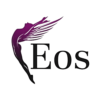In today’s competitive job market, attracting and retaining top talent is crucial for any organisation’s success. To ensure that your talent acquisition efforts are effective and aligned with your business goals, it’s essential to track and measure key performance indicators (KPIs). The KPI for talent acquisition provides valuable insights into the efficiency, quality, and impact of your recruitment processes. Here, we explore the most critical KPIs that every talent acquisition team should monitor.
1. Time to Fill
Definition: The average number of days taken to fill an open position from the time it is posted to the time an offer is accepted.
Why It Matters: A shorter time to fill indicates a more efficient recruitment process, helping to reduce vacancy costs and ensure that business operations continue smoothly. It also reflects the organisation’s ability to attract candidates quickly.
2. Cost per Hire
Definition: The total cost incurred in hiring a new employee, including advertising, recruitment agency fees, interview expenses, and onboarding costs.
Why It Matters: Understanding the cost per hire helps organisations budget effectively and identify areas where they can reduce expenses without compromising on the quality of hires. It also allows comparison with industry benchmarks to ensure competitiveness.
3. Quality of Hire
Definition: A measure of the value new hires bring to the organisation, often assessed through performance evaluations, retention rates, and feedback from managers.
Why It Matters: High-quality hires contribute significantly to an organisation’s success and productivity. By tracking this KPI, organisations can refine their recruitment strategies to attract candidates who are not only a good fit for the role but also align with the company’s culture and values.
4. Source of Hire
Definition: The channels through which successful candidates are sourced, such as job boards, social media, employee referrals, or recruitment agencies.
Why It Matters: Identifying the most effective recruitment channels helps optimise resource allocation and improve hiring strategies. It also provides insights into where the best candidates are coming from, enabling more targeted recruitment efforts.
5. Offer Acceptance Rate
Definition: The percentage of job offers that are accepted by candidates.
Why It Matters: A high offer acceptance rate indicates that the organisation is attractive to potential hires and that the compensation and benefits packages are competitive. Conversely, a low acceptance rate may signal issues with the offer or aspects of the recruitment process that need improvement.
6. Candidate Experience
Definition: A qualitative measure of how candidates perceive and experience the recruitment process, often assessed through surveys and feedback.
Why It Matters: A positive candidate experience can enhance an organisation’s reputation and attractiveness as an employer. It also increases the likelihood that candidates will accept job offers and recommend the company to others, even if they are not hired.
7. Retention Rate
Definition: The percentage of new hires who remain with the organisation for a specified period, typically one year.
Why It Matters: High retention rates among new hires indicate successful recruitment and onboarding processes, as well as good job satisfaction and cultural fit. It also reduces the costs and disruptions associated with high turnover.
8. Diversity Hiring Metrics
Definition: Measures related to the diversity of new hires, such as gender, ethnicity, age, and background.
Why It Matters: Tracking diversity metrics helps organisations build a more inclusive workforce and promote equality. It also enhances creativity, innovation, and performance by bringing diverse perspectives into the organisation.
Read more: The Power of DEI: Why Businesses Should Embrace Workplace Diversity
Conclusion
Monitoring these KPIs for talent acquisition allows organisations to make data-driven decisions, improve their recruitment processes, and ultimately attract and retain the best talent. By regularly analysing and acting on these metrics, businesses can ensure that their talent acquisition strategies align with their overall objectives and drive long-term success.
Employer of Record (EOR) services can significantly enhance a business’s ability to attain its KPIs for talent acquisition by streamlining the hiring process, reducing costs, and improving compliance. By handling administrative tasks such as payroll, benefits, and legal compliance, EORs allow companies to focus on strategic recruitment activities, thus reducing the time to fill positions and lowering the cost per hire. Additionally, EORs can tap into global talent pools, increasing the quality and diversity of hires, which directly impacts the quality of hire and diversity metrics. With their expertise in navigating complex regulatory environments, EORs also ensure that candidates experience a smooth and positive hiring process, thereby improving offer acceptance rates and candidate experience scores. Overall, EOR services help businesses optimise their talent acquisition strategies, making it easier to meet and exceed their KPI goals.
Partnering with an EOR service like Eos is a smart, strategic move. Contact us today and check our services here.
Image by Phong Nguyen Dinh from Pixabay







